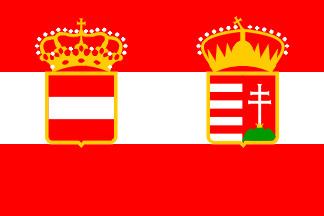 | ||
Active August 1914 – November 1918 Engagements World War IBattle of the Vistula RiverBattle of the Carpathian MountainsGorlice–Tarnów OffensiveGreat RetreatBrusilov OffensiveKerensky OffensiveOperation Faustschlag Notablecommanders | ||
The 2nd Army (German: k.u.k. 2. Armee), later designated East Army (German: Ost-Armee), was a field army-level command of Austro-Hungarian Army that was active during World War I. It was initially formed to take part in the Balkans Campaign before being transferred to the Eastern Front. In the final stages of the war, the army was evacuated from Ukraine before demobilizing in November 1918.
Contents
History
The 2nd Army was formed in August 1914 as part of Austria-Hungary's mobilization following its declaration of war on Serbia and Russia, carrying out the prewar plans for the formation of six field armies. Just as all Austro-Hungarian field armies, it consisted of a headquarters and several corps, along with some unattached units. It was initially composed of the XXI and III Corps, based in Hermannstadt and Graz, respectively, and was reinforced with the VII and IV Corps on 27 August and 2 September 1914. The 2nd Army was commanded by Eduard von Böhm-Ermolli. The 2nd Army was originally planned to join the campaign against the Kingdom of Serbia but was transferred to Galicia to fight against the Russian Empire. There, it replaced the Austro-Hungarian 4th Army as part of Army Group Kövess due to the heavy losses it sustained in battle. In October it was transferred to Russian Poland and took part in the operations there. In February 1915, the 2nd Army was moved to the Carpathian Mountains after the 3rd Army had been badly mauled there earlier in January during its attempted offensive against Russian positions. In preparation for its attack, it was reinforced by the VII Corps.
The harsh climate and mountainous terrain of the Carpathians caused many logistical problems and caused the 2nd Army to suffer from a supply shortage. The spread of disease and the cold temperatures also took their toll on the Habsburg troops. Due to a change in weather the offensive was delayed until late February. The 2nd Army launched its assault on the same positions that the 3rd Army attacked last month, along the strategic roads leading to Przemyśl fortress, but on a narrower front. Its objective was to liberate the besieged garrison at Przemyśl, which had been stuck there since Russia occupied Galicia in 1914. Although they received additional units the battle, the 2nd Army troops were unable to break through the Russian defenses and were pushed back by counterattacks. It sustained heavy losses in the process. The VII Corps under Archduke Joseph August dwindled to just 2,000 men. The Austro-Hungarians continued to fight throughout March, and chief of general staff Franz Conrad von Hotzendorf ordered the V Corps – the unit closest to Przemyśl – to liberate the fortress. Although the fortress garrison had surrendered after a failed break-out attempt on March 19, the 2nd Army was not informed, and so the offensive was attempted. The V Corps ended up being driven back with enormous losses. By the end of the campaign, the 2nd and 3rd Armies were nearly annihilated.
During the Kerensky Offensive in 1917, the 2nd Army was driven back by the Russian 7th Army and later was defeated by the 11th Army at Zolochiv. Around that time, it was organized under Supreme Command "East", led by Prince Leopold of Bavaria. The 2nd Army occupied parts of Ukraine in the spring of 1918 and was headquartered in the port city of Odessa. It was then reorganized as an occupation army, renamed the Ost-Armee (East Army). Field Marshal Böhm-Ermolli was replaced by General of the Infantry Alfred Krauss as the army's commander in May 1918. The units of the East Army were evacuated from Ukraine in the fall of 1918, though some units mutinied and imprisoned their commanders. The army was then dissolved in November.
Order of battle in 1914
The 2nd Army order of battle in mid-1914 was as follows.
Commanders
The 2nd Army only had two commanders during its existence, with one of them holding the post for most of the war.
Chiefs of staff
The 2nd Army had the following chiefs of staff.
